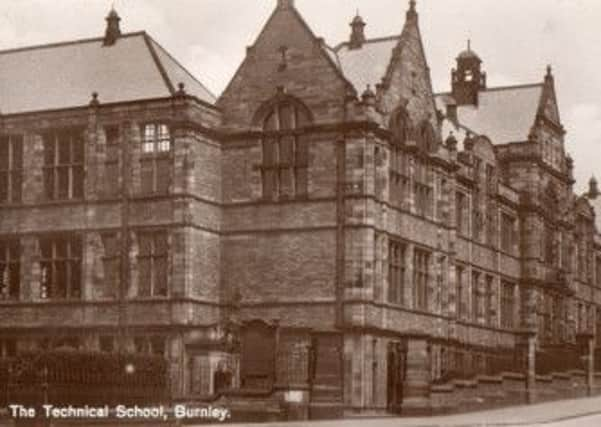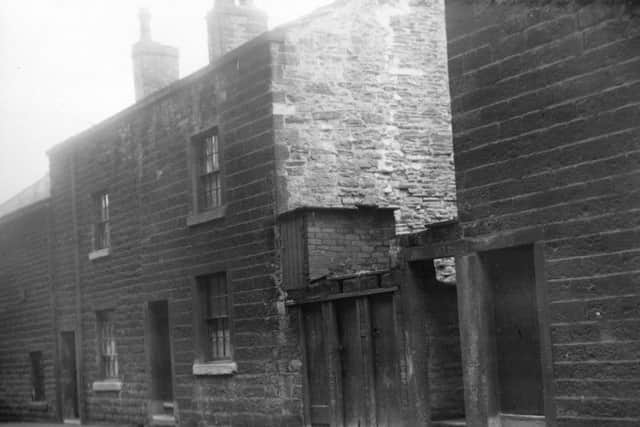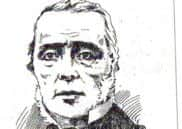The very humble origins of Burnley College 180 years ago


In that year a meeting took place, not in a grand house or gentleman’s club, but in of all places a foundry. The men at the meeting were doubtless aware of the short-lived Society for the Promotion of Mutual Instruction, which was formed in Burnley in 1831, but when the men came together the owner of the firm for which they worked was not present.
Advertisement
Hide AdAdvertisement
Hide AdNeither were any members of Mr Marsland’s family or any of his managers. Those who attended were foundry workers at what was, at the time, Burnley’s biggest iron works and what these men achieved still has an effect on all our lives in Burnley today.


Led by Thomas Booth and William Wood, a group of men from Marsland’s Foundry, started a Book Club. The foundry, though now known as Newtown Mill, still stands dominating what was formerly called the Meadows area of Burnley.
Strictly, Newtown is off Cow Lane and included the former Vulcan and Kay Streets. The original name for the present Lodge House was Newtown Mill, an early cotton spinning mill.
In 1834, Marsland’s foundry, otherwise Burnley Ironworks, was in King Street and the area of which it was a part had been developed in the reign of King George III. A number of the former street names confirm this – King Street, of course, was one; Pitt Street, named after Pitt the Younger who was Prime Minister during the reign and Charlotte Street, which was named after George III’s wife, Queen Charlotte-Sophia of Mecklenburg-Strelitz.
Advertisement
Hide AdAdvertisement
Hide AdIt is unlikely any of the men who met at the foundry in 1834 were Royalists. In fact it is likely a number of them were present only 17 years before when Burnley’s iron workers showed their dismay at the arrival of soldiers in town by instigating a serious riot against them. Burnley was a place where the principles of the French Revolution still found favour and the Government had decided Burnley was to become a barracks town.


The Book Club founded a library which was to consist of “... useful books on arts and sciences, philosophy, history, voyages, travels and general literature; but no novels, plays, deistical or atheistical works or polemical divinity”.
The key word here was “useful” – the books were to be of use to working men who wanted to “improve themselves”.
John W. Kneeshaw, in his book “Burnley in the Nineteenth Century” (1897), makes the point that the setting up of the Book Club was the real foundation of the Mechanics’ Institute. He, of course, was not aware the influence of the founders of the Book Club would stretch not only to the establishment of Burnley Mechanics’ Institute but also Burnley College and to the arrival of a university presence in town.
Advertisement
Hide AdAdvertisement
Hide AdIt may be worth pointing out the governing principles of the Book Club, which are mentioned above, were not unusual at the time. They predate the publication of Samuel Smiles “Self Help” (1859) by 25 years but it is clear the founders were practical men who saw education as a means of self-improvement. Rejection of novels and plays underlines the founders understanding that these were the province of the landed and financially secure classes. The similar attitude displayed towards religion indicates the founders felt the subjects they listed should be left to others. It might also be interpreted as a statement of their intent that what they were doing was for all working men, regardless of their religion.
With regard to education, Burnley, in the early 19th Century, had few educational institutions. There was, of course, the Grammar School, which had been founded in 1559 (though it has a much longer history). The town had a number of what have been termed Dame Schools but their educational effectiveness, not only in Burnley, has been questioned. A number of elementary schools had been founded in town, the first at St Peter’s in 1828. There were also a few small private schools but there was, as yet, no public involvement in education.
The Government had made its first annual grant for education, the paltry sum of £20,000, in 1833. This was divided between two religious societies, the National Society, for Anglicans, and the British and Foreign Society, for Non-conformists. As the years went by, a number of Burnley schools benefitted from these funds but it was not until the 1870s that Burnley Council took any interest in local education.
Getting back to the founders of the Book Club in 1834, it is known that, within a few months, they had a small stock of books, which was kept at the foundry. It is also known that, at different times, they had premises in St James’s Street, Chancery Street, St James’s Row and, later, back at Liverpool House in St James’s Street. It is also thought they rented the room over the former booking office attached to the Swan Inn in St James’s Street but, as Liverpool House, is across the access road, it could be that only one or the other was used.
Advertisement
Hide AdAdvertisement
Hide AdWhat we don’t know is the nature of the work carried out at these premises. There must have been a library and, possibly, a reading room, but were courses run from these building? This we cannot tell and, similarly, we do not know how many men – one would presume it would only be men – availed themselves of the services offered by the Book Club.
I have referred to the facility founded by Burnley iron workers as the Book Club. This is what they called it and I have wondered, because of it, whether it had any political (in the broadest sense of the word) aims. If the facility had merely been a library surely it would have been so-called? A club indicates something more, something that would fit in with the times in which the founders lived.
Most of them would have been able to remember the legislation designed to prevent the meeting of political organisations of working men. This includes the Suspension of Habeas Corpus, in 1793 and 1816 and the Combination Acts of 1799 and 1800. The men who founded the Book Club might have been meeting for other purposes. It would be surprising if they did not talk about politics of the day.
However, what had been achieved was not ignored. In the years immediately following the foundation of the Book Club, Burnley churches were competing against each other possibly in the quest to increase membership. By the mid 1840s, the Catholics, their numbers increased by large numbers of Irish immigrants, were building themselves a fine church, St Mary’s, in Yorkshire Street.
Advertisement
Hide AdAdvertisement
Hide AdThe Anglicans were doing the same, founding churches in all parts of Burnley in the 1830s and 1840s. In addition, they had a plan to establish a Church Institute which was founded at Pickup Croft in 1848 with a new impressive building opening in Manchester Road two years later.
The Church Institute was to have a library, meeting rooms and other facilities which could be used for educational purposes. It was also to possess the Greenwood Library, which was the gift of Mr Holden of Palace House. As the Briercliffe Society has recently been given a number of documents on the history of the Church Institute, I will be writing about this in future.
There was more activity from those who wanted to set up a Mechanics’ Institute in town. There was nothing new about Mechanics’ Institutes. The London and Glasgow Institutes were founded in 1823, Manchester in 1824 and Birmingham in 1825. Burnley, as was often the case, came to Mechanics’ Institutes rather late but, when it did, the whole town came together as one. Colonel Towneley, no longer trammelled by anti-Catholic legislation, became the first chairman of the Institute and laid its foundation stone in 1851. The building was opened in 1855, in the presence of the Earls of Sefton and Carlisle, at the site in Manchester Road, where it still stands as the Mechanics Theatre.
It is not generally appreciated that Mechanics’ Institutes were provided for all working men. We use the word “mechanic” in its limited form, “a workman skilled in making, using or repairing machinery” but the word was formerly in use as “mechanician”, meaning any workman producing goods by the use of any form of equipment.
Advertisement
Hide AdAdvertisement
Hide AdThus, in the proper use of the word, a weaver at a Lancashire loom, as well as an engineer, might be termed a “mechanician”.
Soon Burnley Mechanics Institute was providing a wide-ranging list of courses. In 1856 an Organising Master, a Mr Clement, was appointed, who, in turn, appointed teachers and organised classes throughout the area. Mr Clement taught the higher classes in physics, chemistry and physiology but other subjects, taught at various levels, including grammar, book-keeping, geography, drawing, dictation, music French and German were also available.
In 1858 an Art School was established at the Institute but there was so much going on in the building that other premises had to be used. An extension was added and completed in 1880 at the expense of Alderman John Hargreaves Scott, who was Mayor of Burnley 1871-3, and second President, after Colonel Towneley, of the Institute.
When Burnley Council moved from the old town hall in Elizabeth Street in 1888 to the present town hall in Manchester Road, the Mechanics’ Institute took over the building and converted it into a Technical School. Twenty-one years later, the whole of the educational side of the Mechanics was taken over by the borough council and moved to the newly-built Technical Institute, as it was initially called, in Ormerod Road.
Advertisement
Hide AdAdvertisement
Hide AdBurnley College had been finally created. It had all started in 1834 by a small group of working men. Now, the impressive buildings that were completed in 2009 constitute one of Burnley’s great landmarks and the success of Burnley College is there for us all to celebrate.
I wonder if the college will remember its humble origins in this, its 180th year?